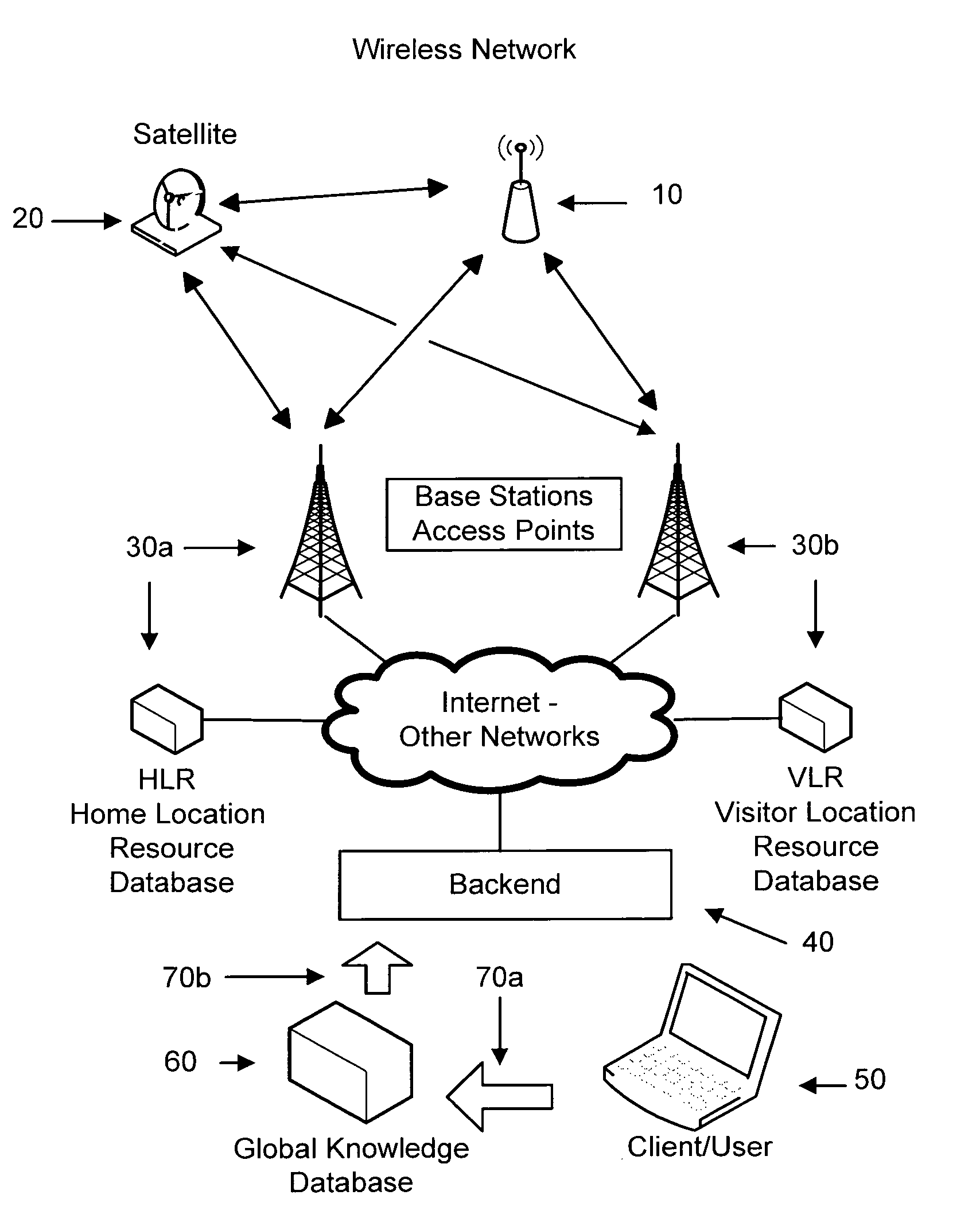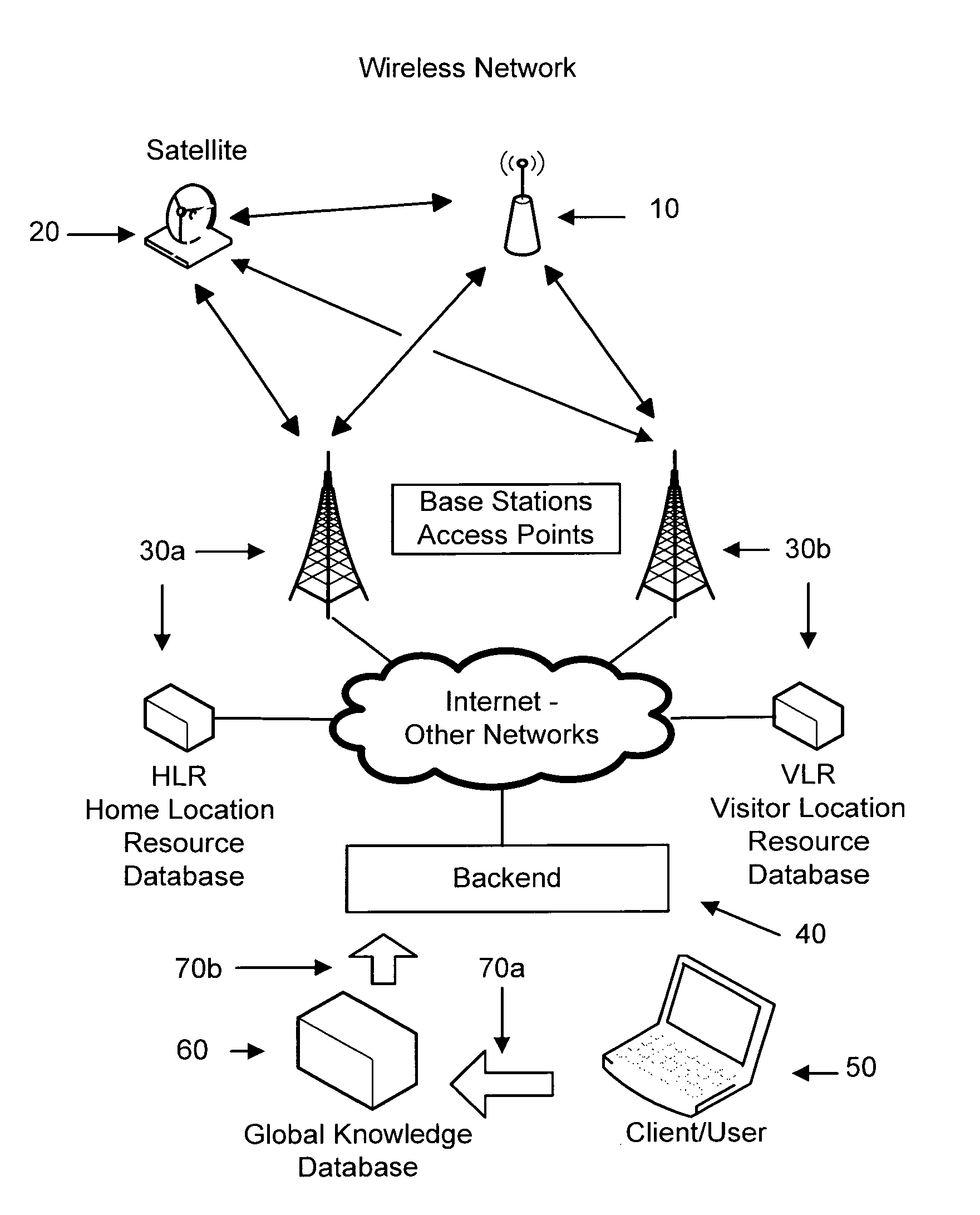Passive mode tracking through existing and future wireless networks
a wireless network and passive mode technology, applied in the field of wireless communication systems, can solve the problems of difficult to acquire a satellite signal inside cargo hold and building, difficult to change the behavior of mobile devices, and much higher signal levels, so as to reduce the effort of positioning, increase precision, and reduce the effect of unit effor
- Summary
- Abstract
- Description
- Claims
- Application Information
AI Technical Summary
Benefits of technology
Problems solved by technology
Method used
Image
Examples
Embodiment Construction
[0031]As this method conveys the tasks and communication to the backend system (40), the backend may advise the tracking unit (10) about proper behavior based on the GKD, Global Knowledge Database, (60) about the tracking units (10) location / situation. One possibility would be if there are no available networks within range for the next few hours (of estimated travel), it is no use for the unit (10) to be searching for one and the backend (40) can advise the unit (10) not to search. Regulatory or other reasons may require the tracking unit (10) to behave in a particular manner, such as at an airport or in an aircraft during flight. The backend (40), better understanding what the unit (10) should be doing, may advice the unit (10) to modify its behavior. Additional information such as Google maps can be used to determine airport location, U.P.S. schedules used for trucking, airline schedules for flights, and packet routing information could be used for hand-offs etc. Third party info...
PUM
 Login to View More
Login to View More Abstract
Description
Claims
Application Information
 Login to View More
Login to View More - R&D
- Intellectual Property
- Life Sciences
- Materials
- Tech Scout
- Unparalleled Data Quality
- Higher Quality Content
- 60% Fewer Hallucinations
Browse by: Latest US Patents, China's latest patents, Technical Efficacy Thesaurus, Application Domain, Technology Topic, Popular Technical Reports.
© 2025 PatSnap. All rights reserved.Legal|Privacy policy|Modern Slavery Act Transparency Statement|Sitemap|About US| Contact US: help@patsnap.com


